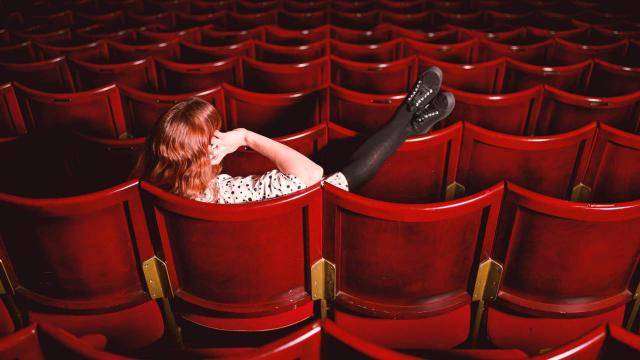Most of us have been to a performance or presentation where the audience was acting in a less than desirable way. It’s distracting to the other audience members, and has the potential to distract the performers or presenters. These less than desirable qualities include checking your phones, talking during the performance, and showing up late, to name a few. Knowing and understanding theatre etiquette is vital due to the severity of impact it can have. Additionally, acknowledging that the environment created for you as an audience member was intentional and conducive to your experience is important.
...it is our responsibility as artists and creators to inform the audience of the desired environment...
I attended a national collegiate dance conference recently, and I have been racking my brain ever since. I’m aware that not everyone is being taught proper dance classroom etiquette, but I didn’t realize just how bad it had become. What’s worse is that those same dancers who have a lack of etiquette in the classroom, have a lack of audience etiquette. In a society where we already struggle with educating our communities on how to be an audience member, we’re not helping ourselves if the performers don’t know the difference.
I sat in a theatre with hundreds of dance majors from various institutions, along with the faculty representatives that brought them to the conference. We were all dancers, teachers, choreographers, designers, and artists. A solo performance began in the program that evening that tackled some heavy subject matter. From the first step, you could see the talent and passion in this dancer. We dove quickly into the narrative of his piece, and his technique and choreography slowly became more intricate and advanced. At a swell of the piece, when emotions were at their highest, the dancer executed an advanced, impressive movement phrase. As my energy and emotions bubbled up in a reaction to this incredible moment, I was quickly pulled out of my experience.
Dancers in the audience began to snap. Not clap, or cheer (not that either of those would have been appropriate in that moment), but snap. Like they were reviving the beatnik culture of the groovy, laid back, albeit ever so cool way to acknowledge someone. This continued on for the rest of the piece, making me even more hyper aware each time. It really started to bother me more as the evening progressed, which led to a lengthy discussion with myself in the three-hour car ride home the next morning about the root of the problem. Back in my own community, I’ve noticed that it is in fact becoming the current “thing to do”. My own students do it in class, rehearsal, and at shows. Perhaps I had noticed it before, but it didn’t really rub me the wrong way until this experience.
You certainly wouldn’t act the same at a hip-hop dance showcase as you would at an opera.
In further discussion, this time not just with myself, the topic of social media arose. I’m not saying that it is a generational issue, but it certainly can be related to the fact that we are so connected to social media. We have the ability to “like” a statement, picture, or meme in a swift tap of a finger. This allows us to profess to the world right away how we feel about something. Could this possibly be why these certain audience members felt the need to comment on every moment they were impressed by? Granted, the moments they were acknowledging were impressive…at least this wasn’t a case of “everyone gets a participation ribbon”; If we praise everything, then it loses its meaning.
There is no black and white response, and I certainly don’t have all of the answers. The cross over from dance into theatrical productions and music performances gets into a grey area. You certainly wouldn’t act the same at a hip-hop dance showcase as you would at an opera. Culturally, those different environments pose very different expectations. That does not make any of them wrong, it just makes them different. While I create a professional setting in my classroom, I’m also not a stickler for strict, “old-school” etiquette either. However, I do make sure that my students are aware of my expectations of them not only in the classroom, but outside of it as well. The other factor in this dilemma is making sure we are creating a safe space for all to feel welcome. We want our audiences to enjoy their experience, and we want them to keep coming back. There can be a fine line between educating and embarrassing someone, and the last thing we want them to feel is shamed or that they don’t belong.
...dancers who have a lack of etiquette in the classroom, have a lack of audience etiquette.
So, who teaches all of this? I believe that it is our responsibility as artists and creators to inform the audience of the desired environment we’re trying to create. Every type of performance whether formal or informal deserves respect. It is important that we preserve the sanctity of the art forms through that respect. We do so by showing up, by having appropriate and perhaps humorous curtain speeches, leading by example, and communication. Stripping the ego away, we need to remember that it’s not all about us and our performance. The magical experience of witnessing live art in a theatre amongst strangers is the foundation of building community. I do not think that people are competing to be “that person” that ruins the experience for others. But if they are not made aware, how will it ever change? Is the culture changing? Are we just supposed to accept that it is and change with it?




